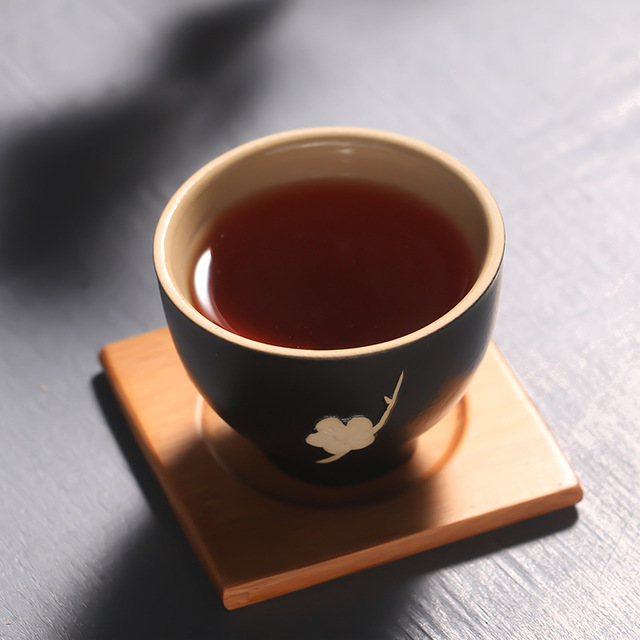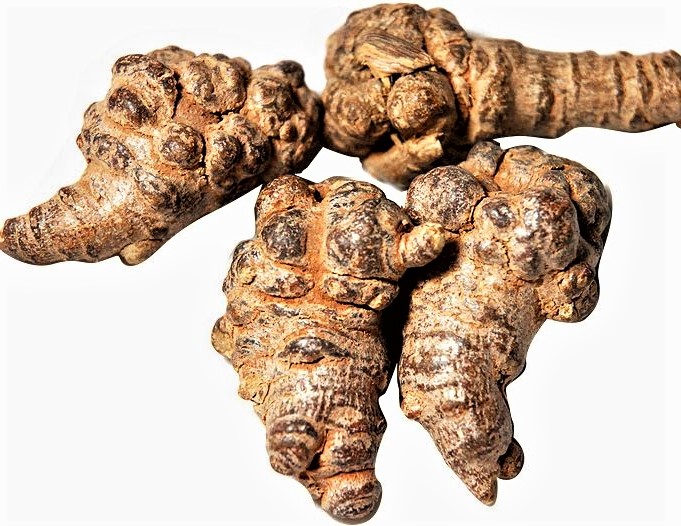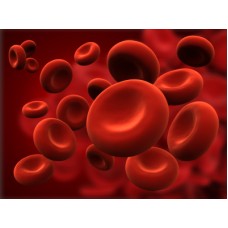Shopping Cart
0 item(s) - $0.00Article | How to Stop Bleeding | Managing Injuries in Martial Arts Training | By Thomas Richard Joiner | 如何止血
 How to Stop Bleeding
How to Stop Bleeding
Managing Injuries in Martial Arts Training
By Thomas Richard Joiner 2011©
Published in martialforce.com
The empirical medical skills that were perfected over the course of many centuries by our martial ancestors through the difficult often painful process of trial and error consisted mainly of ancient Taoist healing practices along with techniques that were a carry over from the branch of traditional Chinese medicine called Dit Da Yao. Some of the primary tools used in “hit medicine” as it is more commonly known included techniques like re-setting bones that had been broken or dislocated from a joint, known as bone-setting; a technique called bleeding that was performed by piercing the skin in order to release bruised-blood caused by blunt force trauma, in addition to using herbs in conjunction with techniques used in Chinese Trauma medicine for treating internal as well as external bleeding. It was the need to manage minor injuries like muscle strains and sprained ligaments — which were considered unavoidable consequences of training — as well as serious combat wounds such as incisions, stab wounds, and blunt force trauma caused by empty hand strikes and strikes from solid objects, that was the primary motivation for martial artists to develop skills in Osteopathy, Traumatology and Herbology. With limited medical options, a martial artist’s ability to skillfully apply emergency first-aid techniques along with administering herbal prescriptions with proven curative abilities was often a matter of life or death. Having no way to earn their keep other than through mercenary activities, prize fighting and teaching their art, the ability to effectively treat a wide range of injuries in order to facilitate a speedy recovery has always been a major concern. This preoccupation with health maintenance was not only motivated by fear of the loss of income needed to maintain basic food and shelter — there was also concern over the possibility of retribution from enemies.
Due to the life-threatening nature of uncontrolled bleeding such as that seen in penetration wounds caused by gun shots, stab wounds and incisions, applying effective first-aid techniques along with hemostatic herbs capable of sealing wounds in order to stop bleeding and avoid fatal blood loss was an extremely valuable skill set. No other type of injury posed a greater threat to the preservation of life and limb of the martial artist than wounds associated with internal and external hemorrhage. The treatment of wounds that could potentially cause the sufferer to literally “bleed to death” is depicted in martial literature such as the legendary Bushido Tales... “Following the battle of Sekigahara in 1598 which had proven to be one of the fiercest of his military career, Tokugawa Leyasu sat on his campstool, wounded and bleeding, viewing the heads of his enemies. After cleaning an incision to his left arm, Leyasu sprinkled a liberal amount of powdered root onto the bleeding area and quickly covered it with a bandage.” Many martial arts historians consider this excerpt from one of the Bushido Tales, one of the earliest documented accounts of battle-field herbal first-aid used by Samurai Warriors. Curiously, centuries later as the Vietnamese war was nearing its end, reports began to surface about the use of similar first-aid techniques by North Vietnamese forces in their war against South Vietnam and the United States. According to reliable sources not unlike the Samurai, Viet Cong troops used centuries old powdered hemostatic herbs to stop bleeding from a variety of combat injuries ranging from simple cuts and bruises to gunshot wounds. Their frequent use of this highly touted first-aid technique further solidified its reputation in both ancient and modern times as one of the most effective emergency battlefield first-aid remedies to stop bleeding.
The application of the technique known as Applying Direct Pressure to stop the reckless flow of blood, combined with the sprinkling of powdered herbs such as San Qi (a.k.a. Tien Chi Ginseng) on an open wound to hasten coagulation and arrest bleeding was by no sheer coincidence, a first-aid technique that until recently was taught by many of the traditional styles of both Karate and Kung Fu for treating minor cuts and bruises like bloody nose or cuts above the eye that can occur during sparring, as well as deep incisions and stab wounds. As a matter of practicality, proficiency in the use of this basic injury management technique was especially important for practitioners of martial arts styles that regularly trained with “live” swords, sabers, daggers or other bladed weapons. Applying direct pressure to stop bleeding which extends beyond martial arts to include all of the so-called blood sports, including boxing, is an intuitive first-aid skill that has been used extensively throughout martial arts long illustrious history. Although it does not require a lot of technical training; the Red Cross, the World Health Organization, and most modern healthcare organizations still consider applying direct pressure to stop hemorrhaging one of the most effective techniques for treating all kinds of uncontrolled bleeding from a simple nose bleed to severe life-threatening injuries. The time-honored injury management protocol can be performed as follows:
How to Stop Bleeding:
Before you attempt to apply the technique to stop the bleeding, wash your hands with soap and water. If rubber gloves are available, I would advise you to put then on in order to avoid infecting the wound, as well as protecting yourself from the possibility of contracting blood-borne viral infections (such as HIV and Hepatitis) when you treat an open wound on any one other than oneself!
- Have the injured party either lie down or sit, depending on the severity and the nature of the injury
- Remove any loose debris or objects from the wound, but do not attempt to cleanout the wound
- Sprinkle a liberal amount of Hemostatic powdered herb such as San Qi onto the wound
- Press firmly on the wound with a thick layer of gauze, a clean cloth or any clean material. If gauze or clean material is not readily available, apply direct pressure with your bare hand until you can get a pad
- When there is an object deeply imbedded in the wound such as a knife, do not attempt to remove it, apply direct pressure around the object not directly over it, to avoid pushing it in deeper. The imbedded object can be removed and the wound surgically stitched after the bleeding has been controlled
- Apply steady pressure, pressing firmly against the wound
- It is important to resist the urge to peek after a few minutes to see if the bleeding has stopped
- If blood soaks through the gauze or cloth, apply another cloth on top of the first and continue applying direct pressure
- If after fifteen minutes of steady pressure a minimal amount of bleeding or oozing continues (when the pressure is released) re-apply direct pressure
- If bleeding has not significantly slowed or stopped after approximately twenty minutes, continue to apply firm pressure, elevate the area of the body that is bleeding, and continue your effort until emergency medical assistance arrives (call 911).
The Chinese herb commonly referred to as San Qi (pronounced san-chee) is well known and highly regarded by Japanese and Chinese martial arts as well as in traditional Chinese medicine and its Japanese counterpart (Kampo) for its blood arresting capability. The esteem afforded the famous hemostatic herb is based on the herbs versatility which is demonstrated by its ability to effectively treat both internal and external bleeding. Clinically, San Qi is used to treat vomiting of blood, stab wounds, expectorating blood from the lungs, bleeding from the nose, and blood in the stool as well as external bleeding caused by trauma.
 Chinese name: San Qi
Chinese name: San Qi
Pharmaceutical name: Radix Notoginseng
Botanical name: Panax Notoginseng
English name: Pseudoginseng
How this Herb is used to Stop Bleeding:
To Stop External Bleeding -
- The powdered herb is sprinkled directly onto wounds and incisions before applying direct pressure
- Nose bleed is treated by ”sniffing” powdered San Qi up the nose or inserting it into the nostril with a Q-tip and pinching the nose, holding it closed (which is a form of direct pressure).
To Stop Internal Bleeding -
- 0.5 -1 teaspoon of powdered herb is mixed with approximately 4-8 oz. of wine or water and drunk one to three times daily. In severe cases of bleeding the amount of San Qi can be increased to 2 teaspoons in 8oz of wine or water.
Contraindications for Use -
- San Qi should not be taken internally by pregnant women because of the possibility of harming the fetus!
Once an important part of the martial arts curriculum, the technique of applying hemostatic agents like San Qi prior to administering direct pressure in order to control bleeding has been practiced by martial artists as diverse as Taoists priests, Shaolin monks, and Samurai warriors. Although no one can argue with the fact that the method described for controlling bleeding was an important part of the ancient warrior’s injury management strategy. The value of techniques and formulas for preparing herbal liniments and embrocations used for treating minor sprains and strains to the ligaments muscles and tendons as well as broken bones — which I will discuss in future articles — was also extremely important and highly valued as an integral part of the martial artist’s arsenal of techniques for hastily resolving injuries.
Chien,
Thomas Richard Joiner, Shihan
Chinese Goju Martial Arts
 Thomas Richard Joiner, author of the Warrior as Healer, Blending Botany and Budo, Chinese Herbal Medicine Made Easy, Martial Esoterica and Kung Fu Medicine is a Shihan 6th-degree black belt in Chinese Goju Martial Arts and has received certification in Tien Tao Chi Kung, as well as being a graduate of the Institute of Traditional Chinese Medicine New York City. He has conducted advanced study in traditional Chinese medicine (acupuncture) and Chinese herbology at the Academy of Chinese Culture and Health Sciences in Oakland, CA under Dr Lai Fu Chai, and the Institute of Chinese Herbology in Berkeley, CA. Thomas’s martial arts education includes training in Wing Chun Gung Fu with Sifu Ralph Rodriquez, Sifu Lee Moy Shan and the late Grandmaster Moy Yat. In addition he has studied Taoist Esoteric Yoga Micro-cosmic orbit meditation, Iron shirt Chi Kung and Seminal Ovarian Kung Fu with Mantak Chia, as well as training in Chinese Goju Martial Arts under Grandmaster/Shidoshi Ron Van Clief. Sensei Joiner’s books provide extensive insights into the centuries-old practice of incorporating herbs into your martial arts training as well as making available prescriptions for many of the legendary and most highly regarded formulas used in Asian Martial Arts for treating injuries as well as enhancing one’s training. Sensei Joiner has been a practicing Chinese Herbalist for nearly two decades, and is the founder of an online mail order company Treasures From the Sea of Chi which specializes in traditional Chinese herbal formulas used in martial arts training. If you would like more information on ancient herbal practices used in the martial arts, Sensei Joiner can be reached at his company email: info@seaofchi.com.
Thomas Richard Joiner, author of the Warrior as Healer, Blending Botany and Budo, Chinese Herbal Medicine Made Easy, Martial Esoterica and Kung Fu Medicine is a Shihan 6th-degree black belt in Chinese Goju Martial Arts and has received certification in Tien Tao Chi Kung, as well as being a graduate of the Institute of Traditional Chinese Medicine New York City. He has conducted advanced study in traditional Chinese medicine (acupuncture) and Chinese herbology at the Academy of Chinese Culture and Health Sciences in Oakland, CA under Dr Lai Fu Chai, and the Institute of Chinese Herbology in Berkeley, CA. Thomas’s martial arts education includes training in Wing Chun Gung Fu with Sifu Ralph Rodriquez, Sifu Lee Moy Shan and the late Grandmaster Moy Yat. In addition he has studied Taoist Esoteric Yoga Micro-cosmic orbit meditation, Iron shirt Chi Kung and Seminal Ovarian Kung Fu with Mantak Chia, as well as training in Chinese Goju Martial Arts under Grandmaster/Shidoshi Ron Van Clief. Sensei Joiner’s books provide extensive insights into the centuries-old practice of incorporating herbs into your martial arts training as well as making available prescriptions for many of the legendary and most highly regarded formulas used in Asian Martial Arts for treating injuries as well as enhancing one’s training. Sensei Joiner has been a practicing Chinese Herbalist for nearly two decades, and is the founder of an online mail order company Treasures From the Sea of Chi which specializes in traditional Chinese herbal formulas used in martial arts training. If you would like more information on ancient herbal practices used in the martial arts, Sensei Joiner can be reached at his company email: info@seaofchi.com.
Article | How to Stop Bleeding | Managing Injuries in Martial Arts Training | By Thomas Richard Joiner—Product: Published Article, 3 pages
Write a review
Your Name:Your Review: Note: HTML is not translated!
Rating: Bad Good
Enter the code in the box below:

All Rights Reserved | © Sea of Chi 2026 | Web Design Company - DreamCo Design
The statements made have not been evaluated by FDA. Our products are not intended to diagnose, treat, cure or prevent any disease.





